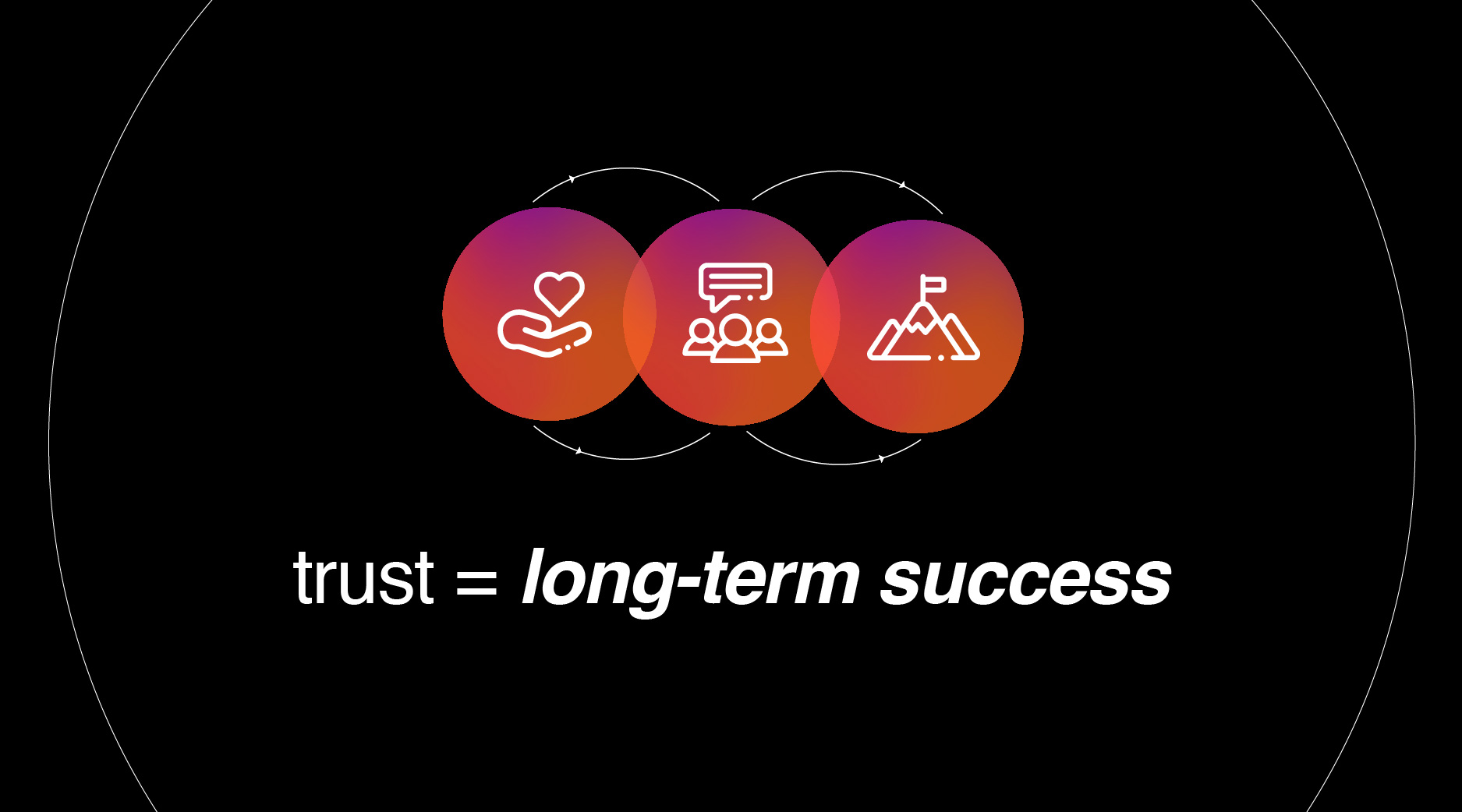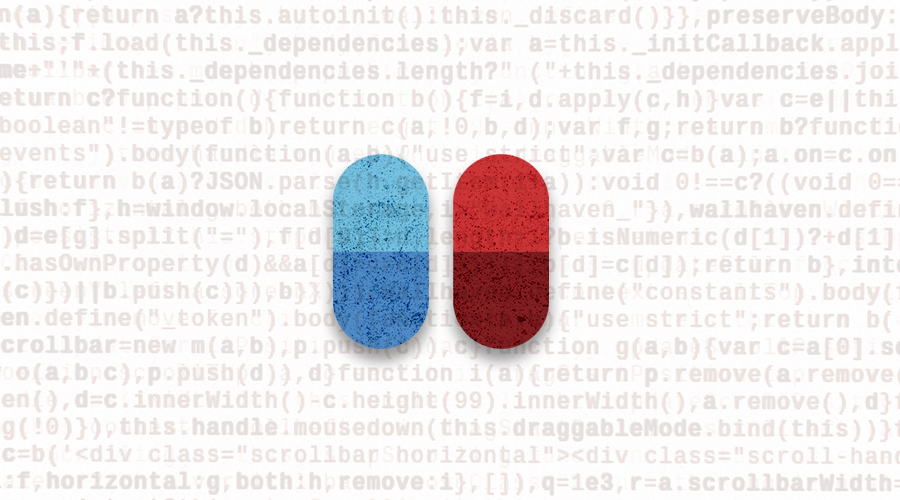It’s been a year since we launched Marketing Sweats, our podcast named for all the hard work, long hours and – well – sweat that marketers pour into their livelihood. And launching a podcast has been no exception. After 12 months, three seasons, 25 guests and over 8.2k downloads, we’ve learned a lot. But one thing’s for certain… it takes more than grit to stand out in our fast-paced industry. It also takes curiosity. And few are more curious than the consultants, coaches, digital experts and CMO’s that we’ve interviewed.
If you’ve listened in, you know that I typically ask each interviewee for a question that they have for another marketer. While these are intended to be theoretical, we just can’t resist digging in and providing some answers of our own. Here are the questions posed by our Season 3 guests and some thoughts on how Simantel is addressing these within our own agency.
1. Jenne Fromm – Consultant, Coach and Founder of Jenneink and Awesome Climbs
Listen to the Full Episode: Creating a Life of Meaning with Jenne Fromm
Jenne: “How will you resist the temptation to fill your life back up? COVID has given us space. It’s given us a lot of space. It makes me sad to see people waste that space. So, what will you do? What safeguards will you put in place to not just refill your life, but instead to look at the things that authentically are true for you and fill your life with those things and not the things that just kind of happened to fall into your lap along the way?”
Simantel: We look forward to “filling our lives back up” in many ways. We’ve missed the in-person conferences, the end-of-day happy hours, the spacious rooms filled with people workshopping big ideas. These are the reasons we do what we do!
But we also recognize the unique power that accompanies this particular space and time. And we don’t want to lose the moments of introspection and clarity it’s allowed us to have. When we do return to the office, a lot of things will be different. For example:
- Like many companies worldwide, Simantel aims to provide a more hybrid environment, where folks can work from home if they want or need to do so. Now, more than ever, we appreciate the value of a much-needed break. For each workday, we encourage our staff to keep their first hour, lunch hour and last hour free. This way, they can ease in and out of their day (and actually break away from the screen sometimes too!)
- We’ve also opened up to the idea of a “7-day-work-week” – and no, we don’t expect you to work for seven days straight! Rather, we want to offer our staff seven days to get a job done, so they may take the time they need to fit work into a modified home schedule.
This flexibility, along with the fun of being around other people, is the work/life integration we all seek. Work is more fulfilling when we can be “whole humans” – dealing with life when life calls, work when work calls and being fully engaged in either space when we need to be.
2. Jack Klues – Retired Chairman and CEO of Publicis Groupe companies
Listen to the Full Episode: Leading with Integrity with Jack Klues
Jack: “In the world that I grew up in you found mentors. You found people who cared about you professionally, as much as personally, and you made contact with clients on a human level. I don’t think the screen thing happening is too good. How do people progress their careers in an online environment?”
Simantel: What’s surprising about this moment in time is that – in many ways – it’s easier to find mentors than ever before. Since we’re all at our computers, we’ve been impressed by how many folks are willing to take a meeting that they may not have had time for previously. Our podcast Marketing Sweats, for instance, has allowed us to meet so many marketing influencers, simply because they’ve given us the time. In other ways, however, COVID has made meeting new people more difficult; coffee shops are closed, conferences are canceled and travel is risky. So, it requires a much more proactive approach to put yourself out there.
Our advice to brand marketers is to invest some free time in figuring yourself out and gaining genuine insight into who you are. This way, when things open back up, you can introduce yourself with ease. Use the time at home to educate yourself and attend online seminars. Respond to that “someone” you’ve been watching on LinkedIn and ask for a meeting. Be fearless in getting to know others, and share content of your own. It’s a different way of networking – but it works all the same.
3. Tracy O’Brien – Chief Marketing Officer at Turner Mining Group
Listen to the Full Episode: Building a Brand from the Inside Out with CMO Tracy O’Brien
Tracy: “I go back to this idea of changing the minds of customers as we grow and evolve. How do you fundamentally change an opinion or perspective of someone who really isn’t even looking for change? Such a hard thing to accomplish.”
Simantel: Years ago, at Simantel, we had a client seeking to sell a new type of technology that would enable more productivity for the B2B buyer. The challenge was: this buyer wasn’t thinking about technology. They were thinking about running their business. We learned quickly that simply telling the business owner to buy technology just wasn’t going to work. We had to think less about the product we were marketing and more about the problems we were solving.
For a year, we encouraged the client not to market the product itself. Instead, we suggested they produce thought-provoking content that would “build trust,” ensuring the brand could be seen as an industry expert with regards to how technology could be utilized to support a business. Long story short, product marketing is a very bottom-of-funnel activity. To change the mind of someone who isn’t looking for change, one needs to be seen as an influencer. From there, a deeper trust may be built.
So, our advice: figure out what your audience cares about and where they are looking for information. Build content that offers them something of value, use visual (yes, even video) content to capture attention and leverage the latest social channels. Pretty soon, an audience – one that isn’t even looking for you – will find you. And they just might be interested in what you’re selling.
4. Dan Eizans – Digital Consultant and Founder of Eizans Strategic Services
Listen to the Full Episode: All Things Digital Marketing with Dan Eizans
Dan: “How do you see your actions with customers changing as a result of so much more isolation, you know, especially in American culture. We’re so focused on these big social experiences and having the freedom to be out and roam. I’ve definitely seen changes in my own habits. I mean, this has forced us (as marketers) into thinking in a very different way across the board. And I think it’s going to forever change the way that we communicate with people and how we navigate our social experiences.”
Simantel: Every year, on our employee survey, our staff answers what they value most about Simantel. And inevitably – almost to a person – one word comes through: the PEOPLE. Our staff values one another, our individual talent and the work ethic we put in every day. They also appreciate our clients for giving them hard and complex challenges to solve (and making the work fun in the process). So, you can imagine not physically spending time with “the people” has been draining for some, especially those extroverts who derive their energy from being around others.
But this has been a good challenge for us. Here’s a few things we’re doing at Simantel:
- Virtual happy hours – Yes, grabbing a drink at the end of the day and throwing together a little “Teams” call will always make you laugh.
- Virtual tradeshows and conference events – Whether it’s through our AMIN network or our clients’ sales events, the work hasn’t slowed down. We’re still networking with folks around the world and building connections in the process. We’re just doing it a little differently right now.
- The virtual pitch and workshop – Marketing agencies are seeing that our business is growing because we can reach clients from afar and bring multiple remote employees together. The energy is different, but the work isn’t. We’re investing in tools, like Miro, to allow all parties to collaborate. And our chat windows are blowing up! Now, every person has a voice – not just the loudest in the room. At Simantel, we are advocates for keeping our cameras on. There’s a different level of connection that happens when we see each other, even if it’s just on screen.
- More round table forums – Simantel has optional self-care sessions on a weekly basis. We brought in one of our podcast guests, Jenne Fromm, to facilitate group conversations about stress and mental health. According to feedback we’ve received from multiple Simantelites, they are happy to connect with their coworkers on a different level. There’s a lot to be said for this new type of virtual engagement.
- Whether we’re providing break-out self-care sessions for our employees to connect in a deeper way or gathering with other marketing CEO’s to talk about business challenges, we’re taking time to listen to each other.
5. Chris Kneeland – The CEO of both Cult Collective and The Gathering of Cult Brands
Listen to the Full Episode: The Mystery of the Cult Brand with Chris Kneeland
Chris: “One of the things I hope that comes out of COVID (as most companies have substantially downsized) is that—as they rebuild—how do marketing and HR band together to build better companies and think differently about what kind of business they want to be and what kind of significance they want to have? I think we’re two islands right now, and we need to bridge them together.”
Simantel: Every organization wants their employees to embrace their brand. Not just so the employees understand what products and services the organization sells, but also who the organization is at its core. Companies that do this well have reported higher levels of internal engagement, better work output and increases in employee retention. All of this saves the organization money.
In 2021, we’re working with our HR department to develop new activities that foster more connections between employees. Everything from personality profiling to self-care sessions to executive coaching. Our teams truly are our greatest asset, and we want to treat them that way. We don’t simply want to bring people together with a cultural event or a lunch-and-learn. We need to give our staff a proactive outlet through which they can connect with one another.
6. Esther Choy – President and Chief Story Facilitator at Leadership Story Lab
Listen to the Full Episode: Personal Storytelling for Leaders with Esther Choy
Esther: “I would like to use a question that I stole from a Freakonomics podcast. One of my favorite questions of all time was: What was one thing that you believed in… for a long time… and then later discovered that you were wrong or have changed your mind?”
Simantel: Wow, this is a hard one for Simantel! So many of the values that we hold true have stood the test of time. Ideas like “living for the challenge,” “having heart” and caring for people within and outside of our community,” and believing we are “better together.” These are the core truths that get us through our long days. A few things, however, ARE changing in our business – and we’ve worked hard throughout the pandemic to keep up with the pace. For example:
- Growth as a goal – For years, Simantel has focused on “doing the right things” and believing that furthering our business for the long-haul was the ultimate goal. However, this year we started to think differently about growth. If we were really focused on our growth efforts – both in terms of the clients we want to work and the services that they need – we would not only endure but build greater influence in areas where we had a real “right to win.” Our minds have been changed – 2021 will bring a more proactive go-to-market strategy, not a reactive one. We’re excited to see where this takes us!
- The role of creative – At our core, Simantel will always be a creative and strategy shop. In recent years, however, our clients’ successes in “activating” (even automating) their strategies have been foundational to our own accomplishments. This year, we realized there is a pretty big space between creative strategy and activation. Within that space lie concepts and disciplines like content, predictive analytics, digital experience strategy, account-based marketing, paid social, etc. The practices of our industry are widely varied, and the role of creative is evolving (while simultaneously “baked in” to each of these). We’re being very intentional about having these conversations and learning as we go. Ultimately, we’re redefining what is “creative” in our shop.
7. Tim Williams – Founding Partner at Ignition Consulting Group
Listen to the Full Episode: Become a Brand in Demand with Tim Williams
Tim: “I would invite your listeners to think about, to what extent have they aligned their personal interests with their business interests, and if their people are finding satisfaction in the work they do? Are they drawn by a deeper purpose than just making money? I think for companies, it’s a hard and eternally difficult question, and you can’t just manufacture it out of the air.”
Simantel: This is really hard work, but it’s exciting work. Some would even argue that this is one of the most important foundational elements for any brand. It’s hard for an organization to develop its marketing efforts without defining this critical layer. So, we appreciate Tim’s question and the challenge he posed. We also encourage all companies to have this conversation.
Years ago, Simantel held a workshop to define our “why” statement. You know, the whole Simon Sinek “Golden Circle” idea: “People don’t just buy what you do, they buy why you do it.” At the time, we built a “why” statement that read something like this: “We believe inspired ideas can change everything.” You see, back then, the ideas we were creating were changing everything for organizations. Entire buildings were being built, cultures were being overhauled and – yes – lives were being saved. This resonated deeply with our leadership team, as we could see the impact of our ideas in very tangible ways. It was a core belief we could rally around.
However, we’d be lying if we didn’t say our “why” has been evolving ever since. It’s not that we don’t love building amazing ideas – we do. But as our agency continues to grow, not all of our staff is involved in that process. And let’s be honest, working remotely because of COVID has made it a little more challenging to hold those big group brainstorms in war rooms filled with large post-its and white boards. It’s our job to make sure that our “why” – our reason for being, our purpose in the world – ladders into our brand.
Since that workshop, we have honed our focus on heavy infrastructure brands. We say we live at the intersection of B2B and B2C buyers’ experiences. And while ideas are still very important, so is activation. Our teams working in activation understand how inspiring someone to act – or to take their next best step – only happens with intention and planning. And if we can make even one step “easier” to take – we’re well on our way to doing our job.
It’s so important for companies to not only define their “why” but to continue to evolve and reassess their reason for being. We owe that to our hard-working staff.
8. Emily Videtto – Vice President and Chief Marketing Officer at Pella Windows and Doors
Listen to the Full Episode: Cutting Edge Strategies for Better CX with Emily Videtto
Emily: “You know… we listen, we learn and we have this exhaustive process around strategy. Creating rigor in our strategic pillars, testing them out, role playing – ensuring they are relevant, even in this changing and evolving world. So, I guess the question I would ask is: how are you building up the capabilities, talents, governance and techniques that enable you to pivot quickly and be flexible and nimble as an organization? You know, those fundamentals are going to take you through all of this. Take a step back and make sure your foundation is right.”
Simantel: In the agency world, the pace of change is supersonic; some industry gurus even believe that restructuring your agency quarterly might not be often enough. That’s a lot of change fatigue, for sure, so we’re constantly asking ourselves how much change is too much.
With our business, our client roster is continually shifting under our feet. Some clients grow. Others shrink as budgets get pulled away. The needs of each client, in terms of services delivered, evolves regularly due to enhancements in technology, content and data. All of these shifts, coupled with an ever-maturing staff of brilliant, creative, strategic and technical minds means, simply: flexibility and agility must be core to our DNA.
While leaders and long-time agency folks may have known this, COVID confirmed the evolving definition of “flexibility” needed for modern times. Not only should we be flexible in our day-to-day activities, but also in our regular communications with the front lines. Sure, we hold our monthly all-employee meetings and regular departmental calls, but nothing replaces the casual, face-to-face, stop-by-my-office-to-talk situation. Especially, when an employee is wondering, “why the heck are we doing things this way?” Our most recent employee survey showed that transparency is helpful in fostering a company-wide understanding of our decision-making process and overall vision.
Lately, we have to be very intentional with regards to our communication culture. Maybe now more than ever before. For example, a couple of times this past year, our agency owners called each employee individually, simply to ask how they were doing. It was good to connect with the folks we’ve known as well as the brand new employees who were onboarded virtually, during one of the craziest years in our company’s history. These conversations were enlightening; they helped us understand what’s been working and what could be done better. Most importantly, we took action based on this feedback.
To be nimble, we need the right people in the right seats at the right time. And that’s not just a necessity when it comes to job function. It’s essential when managing mental health, finding client fit and even making family considerations. In order to manage this in an advantageous way, we need to have group conversations, 1:1 coaching, all-employee communications and – ultimately – a daily focus on facilitating a culture of openness.
At Simantel, internal communication is a top priority. We believe the employee experience is as critical as the customer experience, and we see honesty and accessibility as some of the most important traits a marketer could have.
Our advice: If “internal alignment” isn’t on your job description – add it to the list. A marketer’s ability to create a lasting internal influence is often a direct correlation to their success. Every day at Simantel, we ensure our staff has the talking points and the tools to flex, when needed, all while keeping their long-term goals in mind. Based on her interview, we think Emily Videtto agrees with us. Pella is amazing at setting this alignment, seeking feedback and pivoting as they go along.
9. Daniel Stillman – Coach and Conversation Designer at The Conversation Factory
Listen to the Full Episode: The Power of Conversation Design with Daniel Stillman
Daniel: “I think the question we all have to ask ourselves is: Am I making time for the things that matter most? Like…when I look at my calendar, does it actually represent my goals and my values? And the answer is a lot of the times… ‘Oooh… I gotta work on that.’”
Simantel: On the surface, it might seem like Daniel is talking about calendar management here. Sure, we can all do better at that. At Simantel, we each often struggle to balance what is urgent with what is important, and we frequently try to do both at once. Ideally, we should set aside time for each.
On a larger scale, focusing on an organization’s goals and values is foundationally important, but often requires a mindset shift. Some days, we can get frustrated as our time is often devoted to problem-solving, break-fix issues and “putting out fires.” Yet, this year, we’ve had countless conversations with our leaders, saying: “Wait, maybe that’s exactly the most helpful thing you can do today.” Hmm… that changes the perspective, doesn’t it? When we believe that the things we do every day will not only help us reach our goals, but also allow us to better support our teams and clients – all of a sudden, the work feels more meaningful (albeit sometimes overwhelming).
That’s not to say that we can’t all be better at managing our time. In fact, we’ve gotten into the habit of asking ourselves, “Where do I need to be? Where do I want to be? Where do I not need to be?” From there, we create intentional lists by looking at our calendars in two-to-three week increments of time. But that’s just one strategy we use – there are others. In moments of complete stress, anxiety and chaos – we often simply look internally, considering the decisions we make every day, rather than assuming that wholesale changes to our external environment will provide some ease.
If we spend more energy thinking about the problem to be solved rather than continuing to “do” all the things in front of us – the problems work themselves out. That’s the goal as we see it. Great question, Daniel.
What’s Next for Marketing Sweats
If you’ve made it this far, thank you for sticking with us. These are some awesome insights from our podcast guests that we felt deserved more thought. We sincerely hope that you found at least one of these Q&A insights helpful. If you want to hear more, check out full episodes of Marketing Sweats and subscribe wherever you listen to podcasts.
We are currently planning the next couple of seasons and are interested in talking with smart marketers who are knowledgeable in customer experience for B2B brands. Do you want to be interviewed or do you know someone who would be a great fit for our podcast? Let us know by filling out our contact form or emailing us at LetsConnect@simantel.com.




